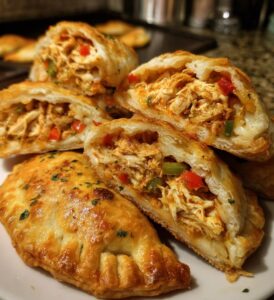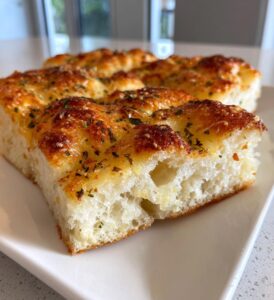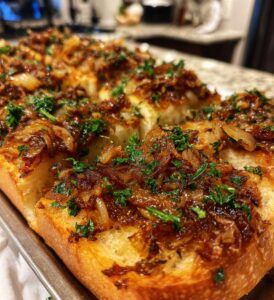Introduction
If you’ve ever bitten into a chewy homemade nougat bar and felt that soft pull of sweet, sticky perfection, you know it’s an experience that store-bought candy can’t match. Whether you’re craving a nutty bite, a marshmallow-soft center, or a silky chocolate drizzle, nougat is where nostalgia and indulgence meet.
But what actually makes nougat chewy? And how do you recreate that ideal texture from your own kitchen? In this guide, we’re unwrapping everything you need to know about making chewy homemade nougat bars—from ingredients and techniques to types of nougat and how to store it.
You’ll also learn about the differences between Arabic and European nougat, tips to customize flavors, and even how long nougat keeps without going sticky or stale. Ready to master this classic confection?
Discover great ideas like Butter Pecan Pound Cake – A Southern Classic to pair with your nougat for the perfect dessert platter.
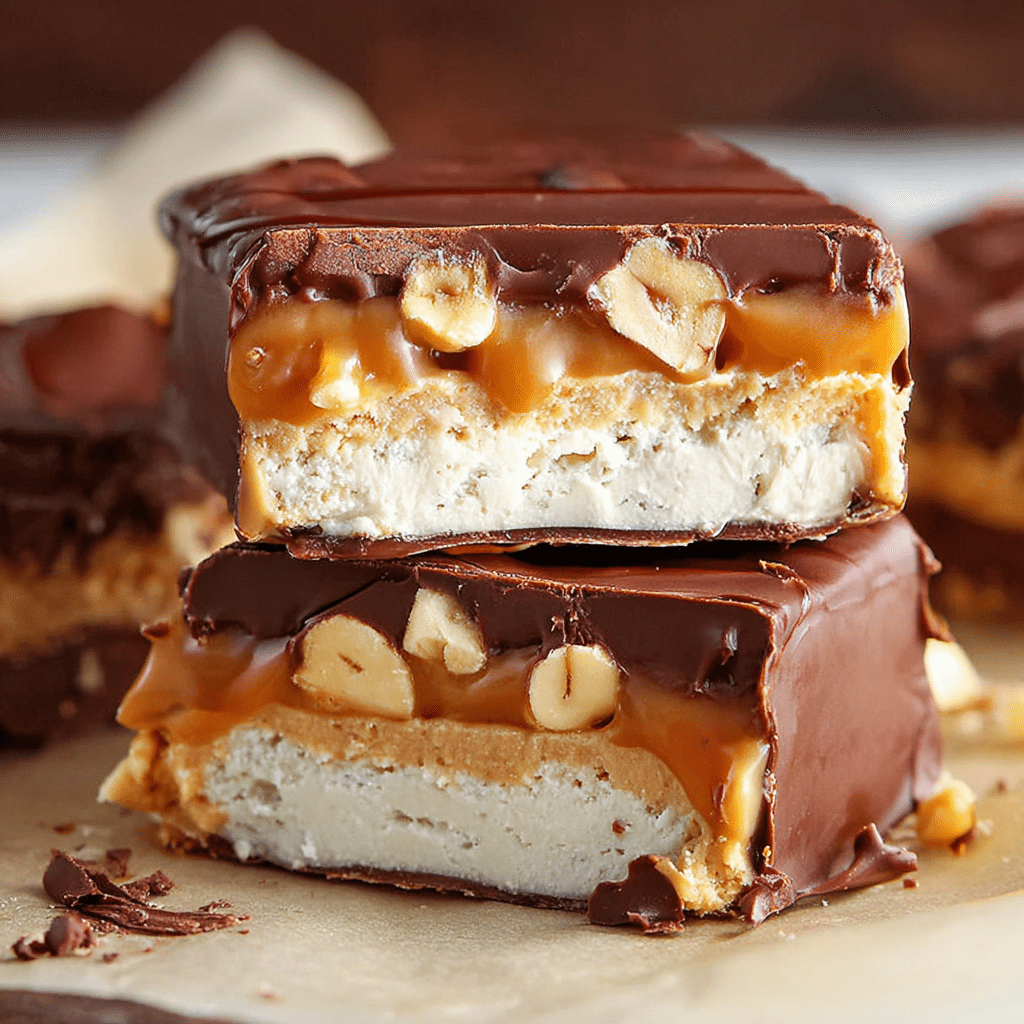
Introduction to Chewy Homemade Nougat Bars
What Are Nougat Bars? A Classic Sweet with Timeless Appeal
Nougat has a long culinary history, dating back centuries across Mediterranean and Middle Eastern cultures. At its core, nougat is a sugar-based confection made with whipped egg whites and a blend of nuts, honey, or glucose. Nougat bars, in particular, take this tradition and shape it into snackable, gift-worthy pieces.
Today, nougat comes in a variety of forms—from soft and chewy to crisp and crunchy. The chewy variety has become a crowd favorite because it delivers that satisfying, almost taffy-like bite, often packed with pistachios, almonds, or even dried fruit.
What sets nougat apart from other candies is its elegant balance: sweetness from sugar or honey, crunch from roasted nuts, and chewiness from carefully cooked syrup and egg whites.
It’s also surprisingly versatile. From holiday trays to wedding favors, chewy homemade nougat bars are a showstopper on any dessert table.
Why Homemade Nougat Bars Are Better Than Store-Bought
When it comes to candy, nothing beats homemade. Here’s why making chewy nougat bars yourself is worth the effort:
- Fewer Preservatives: Commercial nougats are often loaded with stabilizers and artificial flavors. Homemade versions skip all that.
- Customizable: Want a pistachio-only bar with a touch of sea salt? Or one drizzled with dark chocolate? DIY lets you control everything.
- Better Texture: Store-bought bars often sacrifice texture for shelf life. Homemade nougat lets you hit that perfect chewy middle ground.
- Freshness: Nougat is best when it’s fresh. You’ll taste the difference instantly.
In fact, making chewy nougat bars at home isn’t just more flavorful—it’s more satisfying. You’ll enjoy the creative process and the wow factor when your friends try a bite.
Don’t miss our Marble Pound Cake Recipe: Moist, Buttery & Easy to Make as a perfect dessert companion to your nougat spread.
Print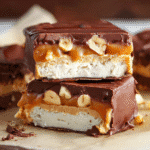
Chewy Homemade Nougat Bars: The Ultimate Guide to Perfect, Sticky-Sweet Treats
- Total Time: 1 hour 30 minutes
- Yield: 20 bars 1x
Description
Soft, chewy nougat layered with creamy caramel, crunchy peanuts, and a chocolate shell—these homemade bars beat anything store-bought.
Ingredients
- 2 tbsp unsalted butter
- 1 cup granulated sugar
- 1/4 cup evaporated milk
- 1 1/2 cups marshmallow crème
- 1/4 cup creamy peanut butter (optional)
- 1 tsp vanilla extract
- 11 oz soft caramels (e.g., Kraft)
- 2 tbsp heavy cream
- 1 1/2 cups salted roasted peanuts (or preferred nuts)
- 2 cups semi-sweet or milk chocolate chips
- 2 tbsp coconut oil or shortening
Instructions
- In a saucepan, melt butter over medium heat.
- Add sugar and evaporated milk, stirring constantly until it begins to boil.
- Continue boiling for 5 minutes while stirring to prevent scorching.
- Remove from heat, then stir in marshmallow crème, peanut butter (if using), and vanilla.
- Pour the nougat layer into a parchment-lined 9×13 baking dish. Spread evenly and let cool.
- In a heatproof bowl, combine caramels and heavy cream. Microwave in 30-second bursts, stirring until smooth.
- Pour over the cooled nougat layer, spreading evenly.
- Sprinkle nuts over the warm caramel layer and gently press in to stick.
- Melt chocolate chips with coconut oil using a double boiler or microwave.
- Pour chocolate over the nut layer and smooth with a spatula.
- Chill in the fridge for at least 1 hour before cutting into bars.
Notes
Store in an airtight container for up to 2 weeks at room temperature, or refrigerate/freeze for longer shelf life. Line pan with parchment for easy removal.
- Prep Time: 20 minutes
- Cook Time: 10 minutes
- Category: Dessert
- Method: No-Bake
- Cuisine: American
Nutrition
- Serving Size: 1 bar
- Calories: 260
- Sugar: 20g
- Sodium: 120mg
- Fat: 15g
- Saturated Fat: 8g
- Unsaturated Fat: 6g
- Trans Fat: 0g
- Carbohydrates: 30g
- Fiber: 1g
- Protein: 4g
- Cholesterol: 5mg
Keywords: nougat, chewy nougat bars, homemade candy, chocolate nougat, praline nougat
What Makes Nougat Chewy?
Understanding the Science Behind the Texture
When it comes to chewy homemade nougat bars, texture is everything. That perfectly soft, pliable bite doesn’t happen by accident—it’s the result of a delicate balance between sugar temperature, air incorporation, and moisture retention.
Nougat gets its chew from a whipped base of egg whites, which forms a marshmallow-like structure when combined with hot sugar syrup. The sugar syrup (often made from a mix of sugar, glucose or honey, and sometimes corn syrup) is heated to a specific temperature—usually between 240°F and 250°F (soft-ball stage). Hitting this precise temperature range ensures that the final product is soft enough to bite into but firm enough to hold its shape.
When you pour that hot syrup into the egg whites while whipping, it cooks and stabilizes the foam, giving nougat its signature chewy consistency. If you undercook the syrup, your nougat turns sticky and wet. Go too far, and it turns rock-hard. Timing and temperature are everything.
This sugar science, combined with ingredients like nuts or dried fruit, creates a firm-yet-tender chew that keeps you coming back for more.
How to Make Vanilla Pecan Pralines Chewy Homemade Nougat Bars
Ready to bring chewy, nutty, chocolate-dipped perfection to your kitchen? Let’s get right into the step-by-step recipe. This version balances vanilla, toasted nuts, creamy caramel, and a melt-in-your-mouth chocolate shell.
Step-by-Step Recipe Guide with Ingredients
Below is a detailed breakdown of ingredients and steps for each layer.
🍬 Nougat Layer:
| Ingredient | Amount |
|---|---|
| Unsalted Butter | 2 tbsp |
| Granulated Sugar | 1 cup |
| Evaporated Milk | 1/4 cup |
| Marshmallow Crème (Fluff) | 1 1/2 cups |
| Creamy Peanut Butter (optional) | 1/4 cup |
| Vanilla Extract | 1 tsp |
Instructions:
- In a saucepan, melt butter over medium heat.
- Add sugar and evaporated milk, stirring constantly until it begins to boil.
- Continue boiling for 5 minutes while stirring to prevent scorching.
- Remove from heat, then stir in marshmallow crème, peanut butter (if using), and vanilla.
- Pour the nougat layer into a parchment-lined 9×13 baking dish. Spread evenly and let cool.
🍯 Caramel Layer:
| Ingredient | Amount |
|---|---|
| Soft Caramels (e.g., Kraft) | 11 oz (1 package) |
| Heavy Cream | 2 tbsp |
Instructions:
- In a heatproof bowl, combine caramels and heavy cream.
- Microwave in 30-second bursts, stirring until smooth.
- Pour over the cooled nougat layer, spreading evenly.
🥜 Add-ins:
| Ingredient | Amount |
|---|---|
| Salted Roasted Peanuts (or preferred nuts) | 1 1/2 cups |
Instructions:
- Sprinkle nuts over the warm caramel layer and gently press in to stick.
🍫 Chocolate Coating:
| Ingredient | Amount |
|---|---|
| Semi-Sweet or Milk Chocolate Chips | 2 cups |
| Coconut Oil or Shortening | 2 tbsp |
Instructions:
- Melt chocolate chips with coconut oil using a double boiler or microwave.
- Pour chocolate over the nut layer and smooth with a spatula.
- Chill in the fridge for at least 1 hour before cutting into bars.
Check out this Bariatric Pumpkin Seed Tea Recipe for another clean and nourishing treat to go along with your homemade sweets.
Arabic Nougat vs. European Nougat
What Is Arabic Nougat Made Of?
Arabic nougat, often referred to as “nougha” or halawa, traces its roots back to Middle Eastern and Mediterranean culinary traditions. Unlike Western versions that rely heavily on sugar and corn syrup, Arabic nougat often emphasizes natural honey, egg whites, and roasted nuts—especially pistachios and almonds. Sometimes, flavor enhancers like rosewater or orange blossom water are added for aromatic flair.
One key difference is texture. Arabic nougat typically falls on the softer, more melt-in-your-mouth side compared to the chewy or brittle consistency found in European styles. It may also be lighter in sweetness, allowing the natural nuttiness to shine.
The chewiness comes from the slow cooking of the honey and careful incorporation of air into the whipped egg whites. No gelatin or marshmallows are used—just simple, honest ingredients that have stood the test of centuries.
Common Mistakes to Avoid When Making Pralines
- Not Using a Candy Thermometer
Guessing sugar temperature can make or break your nougat layer. For chewy results, always target 235°F–240°F. - Overheating the Caramel
Caramel becomes brittle if overcooked. Stir constantly and remove from heat as soon as it’s melted. - Rushing the Layers
Each layer needs time to cool before adding the next. Rushing will cause layers to blend or slide. - Skipping the Parchment Paper
Always line your pan—this makes removal and cutting clean and easy.
Key Differences Between Arabic, French, and Italian Nougat
While the core concept remains the same—egg whites + sugar + nuts—the cultural differences between nougat styles can change everything about the final product, including chewiness, density, and flavor profile.
Here’s how Arabic nougat compares to its European cousins:
| Type of Nougat | Base Sweetener | Texture | Common Add-ins | Notes |
|---|---|---|---|---|
| Arabic Nougat | Honey | Soft, chewy | Pistachios, almonds, rosewater | Mild, aromatic |
| French Nougat (Montélimar) | Sugar + honey | Firm, slightly chewy | Pistachios, candied fruit | Often lighter in color |
| Italian Nougat (Torrone) | Sugar + glucose or honey | Dense, medium chew | Hazelnuts, almonds, citrus zest | Wrapped in edible rice paper |
| Spanish Nougat (Turrón) | Mostly honey | Ranges from soft to hard | Almonds, egg whites | Commonly seen during Christmas |
If you’re aiming for chewy homemade nougat bars, borrowing from Arabic or French styles gives you a solid starting point. Use honey generously, whip egg whites thoroughly, and avoid overcooking your syrup.
Don’t miss our Purple Peel Weight Loss – A Natural Solution if you’re balancing indulgence with health:
Learn more about Purple Peel Weight Loss – A Natural Solution.
The 3 Types of Nougat Explained
White Nougat (Torrone)
White nougat, or torrone, is the most widely recognized and commonly homemade style. Its signature light color and chewy texture come from a base of whipped egg whites and sugar syrup. This variety is especially popular in Italy, Spain, and France, where it’s often made with honey, almonds, and citrus zest, then wrapped in edible rice paper.
Torrone is typically soft to medium-chew, depending on how long the sugar syrup is cooked. The addition of glucose helps reduce crystallization, which keeps the texture silky and chewy instead of brittle. Flavor-wise, torrone is mildly sweet and slightly nutty—perfect for those who love a more traditional, wholesome candy.
Brown Nougat (Nougatine)
Brown nougat, known as nougatine in French cuisine, skips the egg whites entirely. Instead, it’s made by caramelizing sugar and honey, then mixing it with roasted nuts like almonds or hazelnuts. This version is much harder and crunchier than white nougat and resembles a brittle candy more than a chewy bar.
Though it lacks the fluffiness of egg-based nougat, nougatine delivers intense flavor. The caramelized sugars give it a deeper, almost toffee-like taste, making it ideal for those who prefer crisp, candy-bar style nougat. It’s also commonly used in pastry decorations or layered inside gourmet chocolates.
Viennese Nougat (German Style)
Viennese nougat is a different breed altogether. Unlike the chewy homemade nougat bars we’ve been focusing on, this nougat is smooth, soft, and chocolate-based. Sometimes called German nougat, it’s made with sugar, cocoa butter, and ground hazelnuts—closer to a gianduja or praline than traditional nougat.
This type of nougat doesn’t rely on eggs or honey. Instead, the cocoa and nuts are emulsified into a paste-like filling used in truffles, chocolate bars, or layered desserts. While you won’t get that sticky pull, you will get a melt-in-your-mouth texture and deep, nutty sweetness.
Here’s a quick breakdown to help visualize the differences:
| Type | Texture | Main Ingredients | Sweetener | Egg Whites |
|---|---|---|---|---|
| White Nougat | Soft & Chewy | Almonds, egg whites | Honey, sugar | Yes |
| Brown Nougat | Crunchy & Hard | Roasted nuts | Caramelized sugar | No |
| Viennese Nougat | Creamy & Smooth | Hazelnuts, cocoa butter | Sugar | No |
Looking for inspiration? Try our lighter dessert options to pair with these treats—Check out Marble Pound Cake Recipe: Moist, Buttery & Easy to Make for a beautiful flavor contrast.
Troubleshooting: Why Your Pralines Might Not Harden
Making Vanilla Pecan Pralines Chewy Homemade Nougat Bars isn’t just about tossing ingredients together—it’s about precision. A few missteps can leave you with gooey, runny, or gritty results. If your pralines didn’t turn out right, don’t panic. Here’s how to fix the most common issues.
Humidity and Cooking Temperature Issues
Humidity is the hidden enemy of candy-making. High moisture in the air can prevent sugar mixtures from setting correctly. Always aim to make pralines or nougat bars on a dry, low-humidity day—or work in an air-conditioned kitchen if possible.
Additionally, failing to reach the correct sugar stage is the #1 reason why your pralines stay soft.
| Problem | Likely Cause | Fix |
|---|---|---|
| Pralines too soft or gooey | Undercooked sugar (below 235°F) | Reheat to correct temperature and reset |
| Crystallized or gritty texture | Stirring while boiling sugar | Avoid stirring once it starts boiling |
| Bars too hard | Overcooked sugar (above 245°F) | Add small amounts of cream when remelting |
| Layers blending together | Not allowing each layer to cool fully | Chill between each pour for clean definition |
Tip: Always calibrate your candy thermometer before each use—boil water and ensure it reads 212°F at sea level.
Fixes for Runny or Overly Sticky Results
If your nougat layer doesn’t hold its shape, or your caramel is pooling at the bottom, try these quick remedies:
- Refrigerate longer: Sometimes, extra chill time (2–4 hours) is all you need.
- Double the marshmallow crème: If using peanut butter or high-fat add-ins, increase marshmallow crème for structure.
- Add chopped graham crackers or crushed cereal to the nougat layer to absorb moisture.
- Drizzle chocolate separately: If chocolate is melting into the caramel, chill the lower layers completely before adding the top.
Substitutes for Allergies and Preferences
Need to make your nougat nut-free, corn-free, or vegan? Here are some swaps:
| Allergy/Preference | Substitute |
|---|---|
| Nut allergy | Toasted sunflower seeds or coconut flakes |
| Egg-free | Aquafaba (for a softer chew) |
| Corn syrup-free | Brown rice syrup or honey |
| Vegan | Maple syrup + aquafaba + gelatin alternative |
These swaps may slightly change the final texture but still result in a delicious, chewy nougat bar.
Looking for more sweets to customize? Discover great ideas like Butter Pecan Pound Cake – A Southern Classic.
Nougat Bar Storage, Shelf Life & Make-Ahead Advice
You’ve followed every step and made perfect Vanilla Pecan Pralines Chewy Homemade Nougat Bars—now let’s make sure they stay that way. Improper storage can turn your chewy masterpiece into a sticky mess or dry brick. Here’s how to preserve their flavor, texture, and freshness for days—or even weeks.
Best Ways to Store Nougat and Pralines
Storage depends on whether your environment is cool, dry, or humid. Since these bars include nougat, caramel, and chocolate, they’re sensitive to heat and moisture.
| Method | Conditions | Shelf Life |
|---|---|---|
| Airtight container | Cool, dry pantry (65–70°F) | 5–7 days |
| Refrigerator | Airtight + parchment between layers | Up to 2 weeks |
| Freezer | Double-wrapped + sealed container | Up to 3 months |
Key Tip: Separate layers with parchment paper to prevent sticking and melting. Never store them unwrapped in the fridge—humidity will turn the sugar tacky.
Freezing and Reheating Without Losing Chewiness
Yes, these chewy nougat bars freeze beautifully—but only with the right prep.
To Freeze:
- Let the bars cool and set completely.
- Cut into serving-size squares.
- Wrap each bar tightly in plastic wrap.
- Place wrapped bars in a freezer-safe zip bag or airtight container.
To Serve:
- Thaw at room temperature for 30–45 minutes.
- Avoid microwaving unless you want a warm, gooey version.
Pro Tip: To refresh that chewy bite, place bars in a warm oven (250°F) for 2–3 minutes, then cool before eating.
Looking for a functional snack idea?
Check out Bariatric Pumpkin Seed Tea Recipe to pair with your nougat for a protein-rich finish.
If you’re into long-term snack prep, Learn more about Purple Peel Weight Loss – A Natural Solution which pairs well with lower-sugar nougat versions.
Creative Variations of Pralines & Nougat You Must Try
One of the best parts about making Vanilla Pecan Pralines Chewy Homemade Nougat Bars is how easy it is to adapt the recipe. Whether you want to dial up the decadence or make them fit a dietary preference, there are endless ways to customize your bars without sacrificing flavor or texture.
Chocolate-Dipped Praline Nougat Bars
Want to add visual appeal and even more flavor? Dip your finished bars into melted chocolate for a candy-shop finish.
How to do it:
- Cut chilled bars into rectangles.
- Dip halfway or fully into tempered chocolate.
- Sprinkle with sea salt, crushed nuts, or edible glitter before the coating sets.
Dairy-Free or Keto-Friendly Adaptations
If you’re looking for lighter or allergen-free options, good news: these bars are surprisingly flexible.
Dairy-Free Swaps:
| Ingredient | Alternative |
|---|---|
| Butter | Coconut oil or vegan butter |
| Evaporated Milk | Full-fat coconut milk |
| Heavy Cream | Cashew cream or almond cream |
| Chocolate Chips | Dairy-free baking chips (e.g., Enjoy Life) |
Keto Adaptations:
- Use monk fruit sweetener or allulose in place of sugar.
- Swap marshmallow crème with a keto-friendly version (like Wholesome Yum).
- Choose sugar-free chocolate and skip the caramel or make it with keto caramel syrup.
Keep in mind: texture may change slightly, but flavor can stay just as indulgent.
More Tips for Creative Flavor Twists:
- Add a layer of crushed pretzels under the nougat for a sweet-and-salty bite.
- Mix dried cherries or cranberries into the caramel layer for tart contrast.
- Drizzle with white chocolate and sprinkle with toasted coconut for a tropical version.
This variation is ideal for holidays, gift baskets, or events when you want a stunning presentation. Pair these with our Strawberry Cheesecake Dump Cake for a full dessert spread that wows.
Serving, Gifting & Customizing Nougat Bars
Flavor Variations
Customize your nougat with:
- Nuts: Swap almonds for pistachios or hazelnuts
- Fruit: Add dried cranberries or apricots
- Chocolate: Drizzle or dip in melted chocolate
- Spices: Try orange zest or cinnamon
- Sea salt: Sprinkle lightly for contrast
These tweaks add color, texture, and new flavors to your chewy homemade nougat bars.
Simple Gifting Ideas
Make your nougat gift-ready:
- Wrap each bar in parchment
- Tie with string or ribbon
- Use a box or jar with labels
- Include a “store in cool place” note
It’s a quick, heartfelt gift for holidays or parties.
Looking for inspiration? Try Strawberry Cheesecake Dump Cake – The Best Easy Dessert for another crowd-pleasing homemade treat.
Common Mistakes to Avoid When Making Nougat
Why Your Nougat Turned Out Too Hard or Too Soft
The #1 mistake? Incorrect sugar temperature.
- Too soft? You didn’t cook the syrup hot enough (below 240°F).
- Too hard? Syrup was overheated (above 260°F), turning it into brittle.
Always use a reliable candy thermometer and aim for the soft-ball stage (240–250°F).
Temperature Troubleshooting and Sugar Tips
- Don’t rush the syrup. Stirring too much causes crystallization.
- Beat egg whites to stiff peaks before adding syrup for best structure.
- Add syrup slowly while mixing, or it deflates the meringue.
- Humidity matters—avoid rainy days; moisture ruins the chew.
Want to build your skills beyond nougat? Check out Marble Pound Cake Recipe: Moist, Buttery & Easy to Make to keep the sweet wins coming.
Chewy Homemade Nougat Bars
What makes nougat chewy?
Chewiness comes from a balance of whipped egg whites and cooked sugar syrup. Heating the syrup to 240–250°F (soft-ball stage) and slowly mixing it into the egg whites creates the elastic texture. Honey or corn syrup helps retain moisture, preventing the nougat from hardening too quickly.
What is Arabic nougat made of?
Arabic nougat is typically made from honey, egg whites, and roasted nuts like pistachios or almonds. It’s often flavored with rosewater or orange blossom water, giving it a softer and more aromatic finish compared to Western versions.
What are the three types of nougat?
The main types are:
- White Nougat (Torrone): Soft and chewy, made with egg whites and sugar syrup.
- Brown Nougat (Nougatine): Crunchy, caramelized sugar and nuts, no egg whites.
- Viennese Nougat: Smooth and chocolate-based, made with cocoa butter and ground nuts.
How long does homemade nougat keep?
When stored in an airtight container, chewy homemade nougat bars last about 2 weeks at room temperature. For longer shelf life (up to 1 month), refrigerate or freeze—just wrap well to prevent drying out or becoming sticky.
Can I make chewy nougat without corn syrup?
Yes. Replace corn syrup with honey, glucose syrup, or even brown rice syrup. While the texture may vary slightly, you’ll still get a satisfying chewy consistency if you control the sugar temperature correctly.
Why does nougat get sticky over time?
Sticky nougat usually results from humidity or undercooked syrup. Moisture in the air or improper storage causes sugar to soften, making the nougat sticky. Always store nougat in a cool, dry place and wrap each piece individually.
Final Thoughts on Mastering Chewy Homemade Nougat Bars
Making chewy homemade nougat bars isn’t just about following a recipe—it’s about understanding texture, temperature, and timing. With the right tools, quality ingredients, and a bit of patience, you can create nougat that’s soft, chewy, and far better than anything store-bought.
From learning what makes nougat chewy, to exploring its types, storage tips, and custom flavors, this guide gives you everything you need to get it right the first time—and impress with every batch.
If you’re ready to take your sweet-making skills further, here’s more you might like:
- Discover great ideas like Butter Pecan Pound Cake – A Southern Classic
- Don’t miss our Marble Pound Cake Recipe: Moist, Buttery & Easy to Make
- Check out Bariatric Pumpkin Seed Tea Recipe
- Looking for inspiration? Try Strawberry Cheesecake Dump Cake – The Best Easy Dessert
Homemade nougat is more than a treat—it’s a tradition you can pass down.
For daily recipes you can follow me on Facebook and Pinterest.
